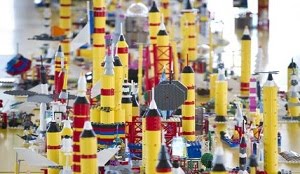Researchers at the University of Leicester, UK, have developed a new radar mode that allow observations of space weather, which can have devastating impacts for technologies on earth.
The researchers have implemented a "double pulse" radar-operating mode on two radars, which form part of a global network of ground based coherent scatter radars called SuperDARN (Super Dual Auroral Radar Network).
According to James Borderick, of the Radio and Space Plasma Physics group, within the Department of Physics and Astronomy, "Intense space weather events are triggered by the explosive release of energy stored in the Sun's magnetic fields."
"A strong burst of electromagnetic energy reaches the Earth with the potential to disrupt many of our fundamental services, such as satellite and aviation operations, navigation, and electricity power grids. Telecommunications and information technology are likewise vulnerable to space weather," he said.
"We have implemented a new "double pulse" radar-operating mode on the Radio Space Plasma Physics Group's Co-operative UK Twin Located Auroral Sounding System (CUTLASS) radars," he added.
"The new sounding mode enhances our temporal resolution of plasma irregularities within the ionosphere. The resolution increase may help our understanding of coupling processes between the solar wind and the Earth's magnetosphere by allowing the observation of smaller scale phenomena with an unprecedented resolution," said Borderick.
"Utilizing our new radar mode and the vastness of ground based and space based instruments at our disposal, we are ever increasing our understanding of the countless phenomena associated with the Solar-Terrestrial interaction, and one day, may lead us to the accurate predictions of intense weather events- and an active defence," he added.
The research introduces the importance of utilizing ground-based measurements of the near space environment in conjunction with spacecraft observations and then proceeds to explain the direct influences of space weather on our own technological systems.



0 comments:
Post a Comment